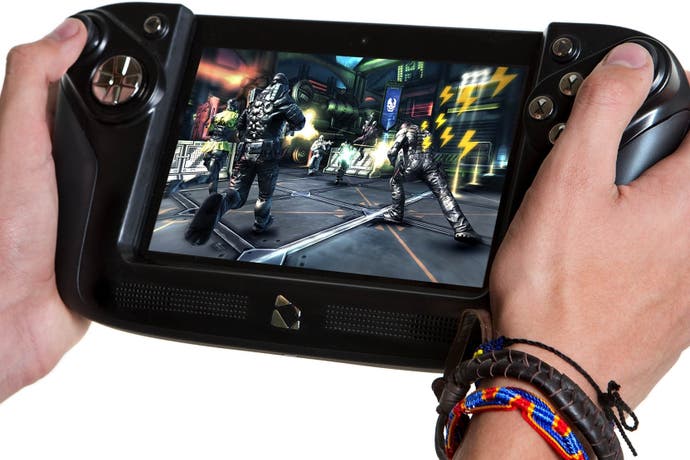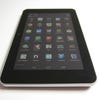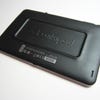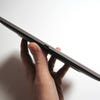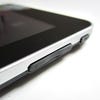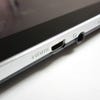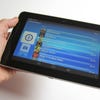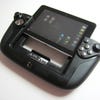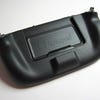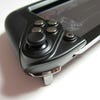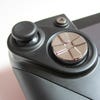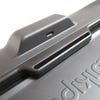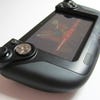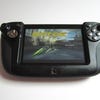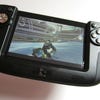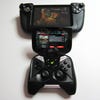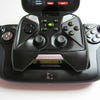Wikipad review
An Android tablet with detachable gaming controls - the best of both worlds for mobile gaming?
The Wikipad's route to market has been convoluted and somewhat troubled. Originally pitched as an 8-inch tablet with glasses-free 3D capability and detachable gaming controls, it slowly morphed into the pared back product we have today. The 3D is gone and the display is now 7-inches from corner to corner, but the intention remains the same: the Wikipad is aimed at gamers who want the best of both the tablet and portable gaming worlds.
The device's big selling point remains the gaming controller dock, which interfaces with the tablet portion via a Micro USB connection - but the Wikipad is far from the only Android slate to offer physical controls. While it seemed like an innovative idea back in 2012, we've seen other challengers such as the Archos GamePad and Nvidia Shield enter the arena. With Android 4.1 installed and a 1.4GHz Tegra 3 chipset on board, the Wikipad isn't exactly on the cutting edge, either, meaning it relies solely on its detachable gaming dock to differentiate itself from the crowd.
When viewed apart from the quite frankly enormous gaming controller, the Wikipad is actually a surprisingly svelte offering. The slightly tacky faux-metallic trim calls to the mind the 2012 Nexus 7, while the rubber-coated back is tactile and grippy. Although the tablet is slim, there's a raised section in the centre of the back panel, used for additional purchase when the device is connected to the gaming dock. It makes the Wikipad slightly thicker than it seems at first, but actually improves the ergonomics of the slate; your fingers instinctively grip the raised inner edge.
The 1280x800 pixel IPS LCD screen is bright, reasonably striking and has excellent viewing angles, but isn't quite up to the same standard as the display on the 2013 Nexus 7 - a lit pixel was present on the review unit we had, which is slightly concerning from a quality perspective. Audio is pumped from stereo speakers on the back, while the rest of the Wikipad is relatively nondescript. The volume rocker and power button are located on the top-left edge of the device, there's a front-facing 2-megapixel camera for video calls and a MicroSD card slot is found on the right edge.
16GB of onboard memory is included as standard, and there's an HDMI-out port for hooking up the Wikipad to your television - in common with virtually all mobile devices, you should expect a hit to frame-rates in 3D games should you use this.
When you bolt on the plastic gaming dock, things become a little more interesting. The Wikipad locks into place with a satisfying click, and it requires a firm tug to pull it free - so there's no danger of the tablet section decoupling unexpectedly. Like the Nvidia Shield, the Wikipad is blessed with a full arrangement of gaming controls - dual analogue sticks, an eight-way d-pad, four action buttons, two shoulder buttons and twin shoulder triggers. All of these elements are set quite high on the device, which initially feels quite awkward but prevents the combined unit from becoming top-heavy and tipping out of your grasp.
Once you get over the incredible size of the Wikipad and its gaming interface, it's easy to be drawn into its charms. Fire up online multiplayer shooter Shadowgun: Deadzone and the advantage this kind of system offers is immediately apparent - the twin sticks allow you to run rings around opposing players in such a fashion that's it's almost unfair. However, the quality of the hardware isn't quite as robust as the Shield; the buttons feel a bit cheap and the sticks slightly flimsy. The saving grace is the d-pad, which - despite being coated with a tacky chrome finish - is actually rather good for retro gaming via the many emulators available on the Google Play market.
Armed with a 1.4GHz Tegra 3 T30S chipset - comprised of a quad-core ARM Cortex A9 and 12-core GeForce ULP - the Wikipad lags well behind the likes of the Nvidia Shield, which sports a 1.9GHz Tegra 4 and a truly generational leap in graphical performance. However, it maintains relative parity with the Ouya and the forthcoming GameStick - both of which also utilise Tegra 3. The trouble is that these Android-based micro-consoles retail for well below the £250 being asked for the Wikipad - even the Shield is currently less than that, should you have the opportunity to pick one up in the USA.
"Wikipad's physical controls do the job as intended, but the problem is that its lack of horsepower limits its future for 3D gaming."
Performance is passable, but hardly awe-inspiring. Our usual test subjects - Dead Trigger, After Burner Climax and Real Racing 3 - were perfectly playable but had jerky, inconsistent frame rates. Comparing a title like Shadowgun: Deadzone on both the Wikipad and Shield shows just how large a performance gap exists between Tegra 3 and its successor; the experience is a lot less smooth and enjoyable on the former. Indeed, at a recent presser at Gamescom, Madfinger games suggested that there's a colossal 8x performance boost between the two processors.
It terms of OS, the Wikipad also feels out of date: Android 4.1 is far from the latest version of the Google's mobile software - it made its debut over a year ago with the Nexus 7. The current version is 4.3, and while this doesn't offer a massive improvement over the iteration that ships with the Wikipad, it's a real shame that the device couldn't be a little more up to date. On the positive side, the user interface is refreshingly free of pointless apps and bloatware; in fact, it's practically the vanilla Android experience, similar to that seen on the Nexus line of products, and indeed Nvidia Shield.
Unlike the Ouya and GameStick - both of which have their own closed app stores - the Wikipad grants access to the Google Play market, which instantly opens up a vast library of games. However, not all of those are optimised to take advantage of the Wikipad's physical controls - Nvidia's Shield found itself in the same pickle, but at least with the Wikipad you can play touchscreen titles in comfort, thanks to the detachable tablet section. There's also the Tegra Zone marketplace, which is a curated catalogue of games which links directly to the Google Play store. The games highlighted make use of the Tegra tech inside the device, but confusingly not all of the titles run on the Wikipad - Gameloft's graphically impressive racer Asphalt 8: Airborne is listed as incompatible.
"Benchmarks show the Wikipad duking it out with the iPad mini and last year's Nexus 7. This year's Google offering is clearly streets ahead."
| Wikipad | Nexus 7 2013 | Nexus 7 2012 | Nexus 10 | iPad mini | Nvidia Shield | |
|---|---|---|---|---|---|---|
| Sunspider 0.9.1 (Java) | 1425.5ms | 763.6ms | 1735.8 | 873.3ms | 1606ms | 396.3ms |
| Kraken 1.1 (Java) | 70659.0ms | 10513.8ms | 25100ms | 7930.5ms | 36261.4ms | 7192.7ms |
| GFX Bench 2.7 T-Rex HD (offscreen) | 2fps | 15fps | 3fps | 12fps | 3fps | 24fps |
| GFX Bench 2.7 Egypt HD (offscreen) | 11fps | 39fps | 10fps | 39fps | 15fps | 65fps |
| 3DMark Ice Storm | 3628 | 11489 | 4364 | 7769 | - | 19527 |
| 3DMark Ice Storm Extreme | Fail | 6750 | 2874 | 5258 | - | 11476 |
As was promised back in 2012, the Wikipad also comes blessed with PlayStation Certification and has the PlayStation Mobile app pre-installed. This additional storefront requires you to sign in with your PlayStation Network account - thereby surrendering yourself to Sony's annoying policy of forcing you to "top-up" your wallet with at least £5 before you can download anything - but the irritation is lessened by the fact that PlayStation Mobile games support the Wikipad's physical controls; Super Crate Box plays like a dream, for instance. Sadly, Gaikai cloud gaming support - which was announced around the same time as the PlayStation Mobile hook-up - hasn't made it into the final product, owing to Sony's acquisition of the firm in 2012.
Wikipad: the Digital Foundry verdict
A year ago, the Wikipad made sense. A reasonably competent Android tablet with a full gaming interface, it looked to offer players two products for the price of one, rather than forcing them to stick with a single interface configuration. The time it has taken to reach consumers has allowed Nvidia to bring its own vision of Android gaming to market: the infinitely more appealing Shield handheld, which is both more portable and more powerful than the Wikipad, yet it retains price parity.
As is often the case when manufacturers try to converge two separate concepts, the Wikipad ends up being a jack of all trades, master of none. As a tablet, it's comprehensively beaten by the 2013 version of Google's Nexus 7, and as a gaming system the aforementioned Shield beats it in every respect other than screen size. If it were priced more attractively, the Wikipad would perhaps be able to find itself a niche to call its own; however, at £250 it's simply too expensive when you take into account the stiff competition it faces.
The Wikipad certainly has its heart in the right place, but ultimately there are too many negatives present to make it a worthwhile purchase. The gaming interface makes it bulky, it lacks graphical power, it ships with a version of Android which is over a year old and the price is simply too high.
